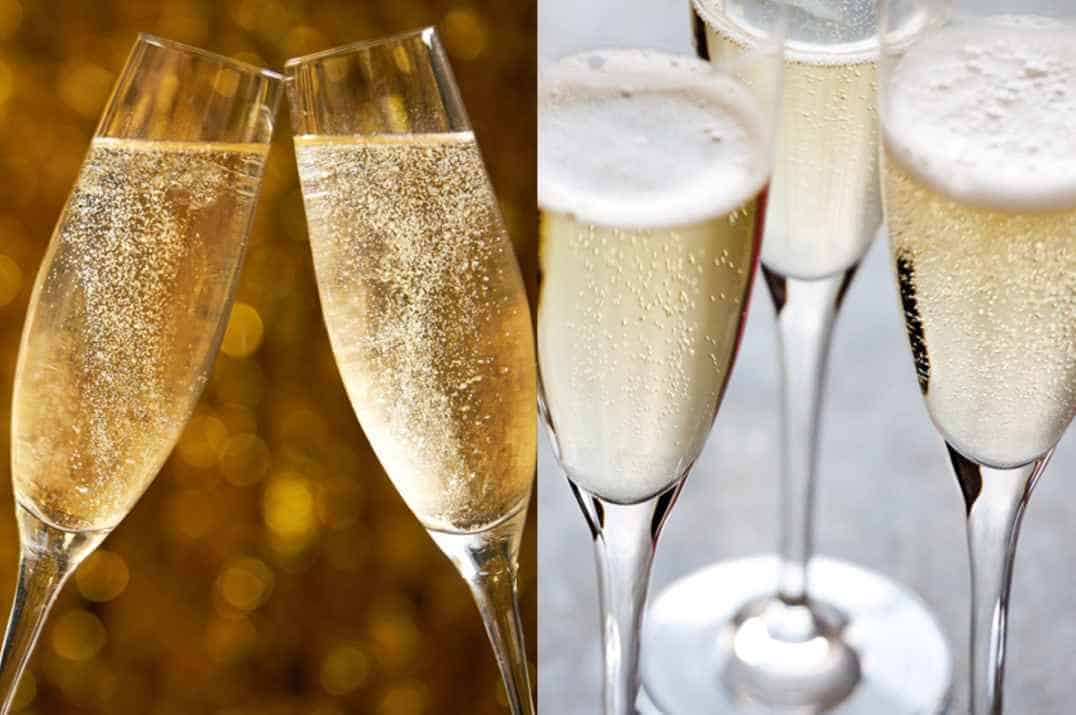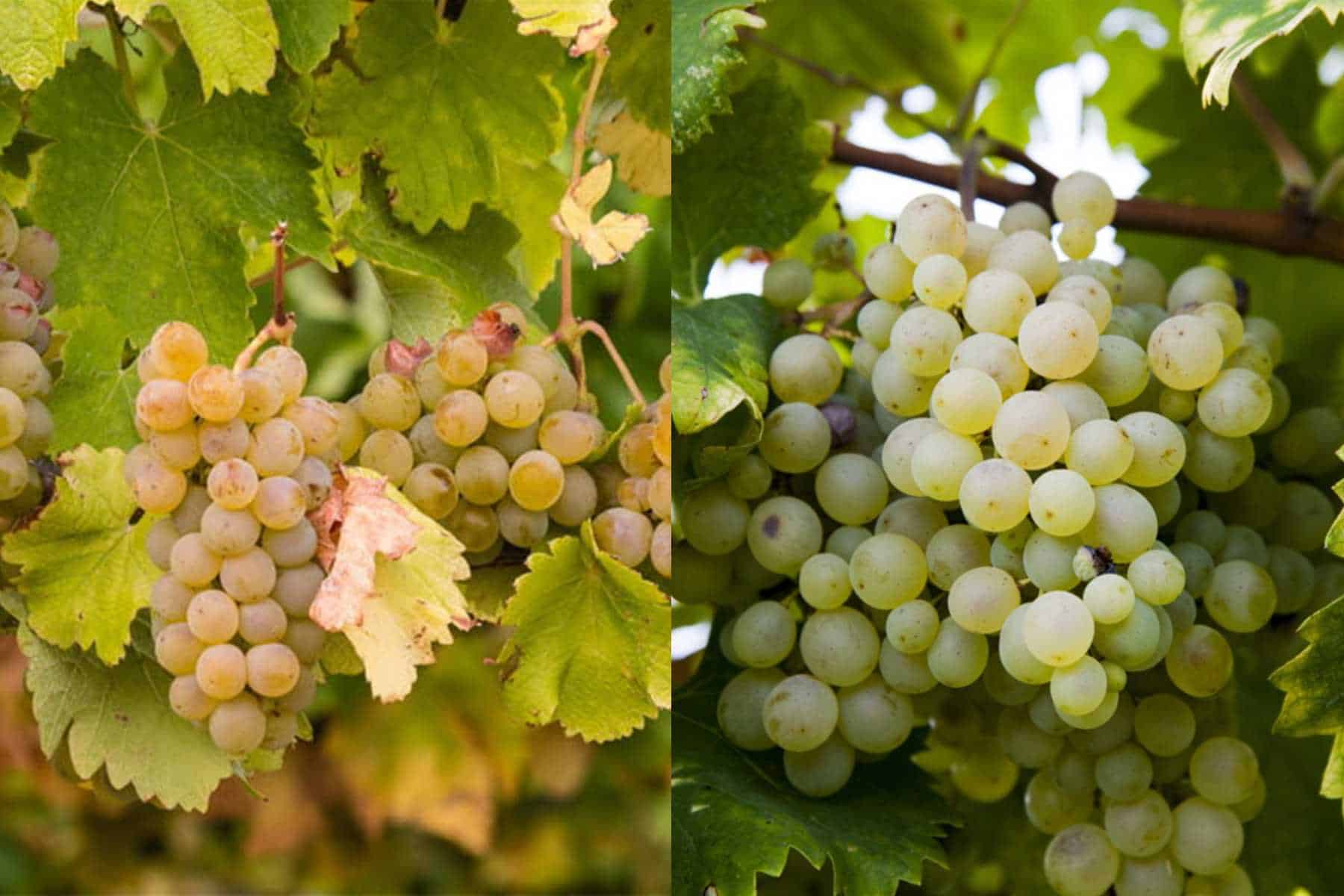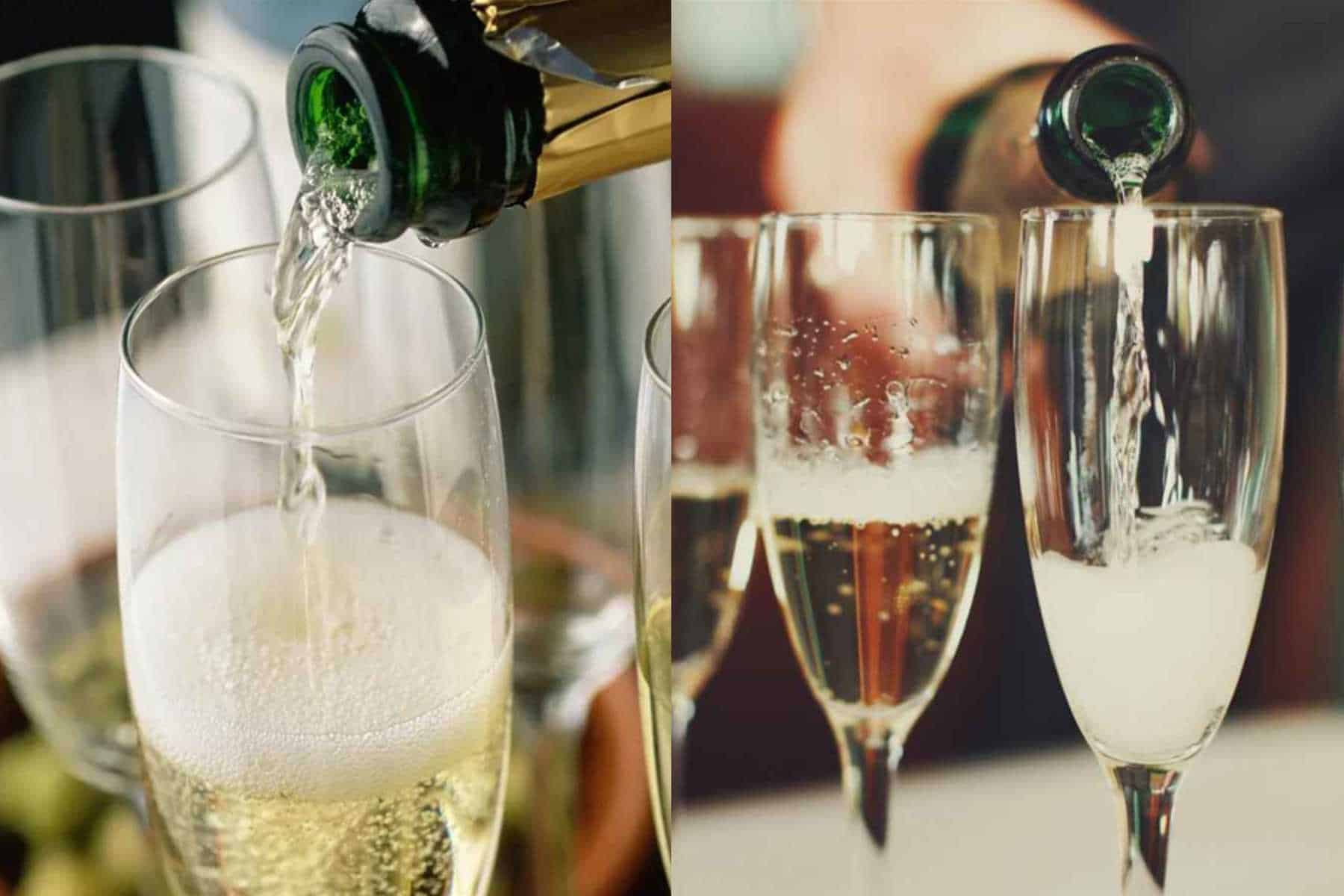Have you ever wondered, “is Prosecco wine or Champagne?” These two bubbly beverages are both types of sparkling wines. However, the similarities end there. This article will reveal the differences between the two. You can use the information to decide which bottle to serve at your next celebration.
The Difference in Flavor Profiles
Before we dive into the details, here’s an overview of the differences between the two sparkling wines.
Prosecco vs. Champagne: An Overview
| Features | Prosecco | Champagne |
| Region | Veneto, Italy | Champagne, France |
| Vineyard climate | warm | cold |
| Grapes | Glera | Pinot Noir, Chardonnay, and Pinot Meunier |
| Production | Charmat Method | Method Champenoise |
| Tasting Notes | Honeydew, apples, and pears | Almonds, toast, and citrus |
| Bubbles | Soft and light | Lively and persistent |
| Alcohol by Volume | 10.5 – 13% | 12 – 13.5% |
| Price Range | $10 – $ 30 | $ 40- $ 300 |
Taste Profiles
Prosecco and Champagne have exceptionally varied flavor profiles. Prosecco’s main tasting notes are honeydew, pear, fresh cream, and green apples. On the other hand, a sip of Champagne will give you flavors of almond, cherry, citrus, toast, and white peach.
Prosecco exudes floral and fruity notes because of its grapes. They go through aging with enormous tanks. Some more expensive Prosecco brands have banana cream, hazelnut, and vanilla flavors.
Meanwhile, Champagne sometimes mimics the taste of cheese rinds. This unusual taste of biscuits and toast comes from its prolonged fermentation. Finer Champagne bottles taste of orange zest, white cherries, and almonds.
Sweetness / Dryness
Prosecco and Champagne share the same sweetness and dryness labels and scale. The levels are based on the amount of sugar and wine in the final mixture. However, you may notice that Prosecco is sweeter than Champagne. It is because the former has a lighter body than the latter.
The following are the classifications of Prosecco and Champagne based on the amount of sugar per liter.
- Doux: more than 50 grams
- Demi-sec: 32- 50 grams
- Dry: 17 – 32 grams
- Extra dry: 12 – 17 grams
- Extra brut: 3-6 grams
- Brut Zero: less than 3 grams
Bubbles
A Champagne’s aging process goes through high-pressure carbonation. It results in this sparkling wine’s persistent and long-lasting spritz. On the other hand, Prosecco’s Charmant method applies less pressure, resulting in light and fizzy bubbles. The fizz also quickly disappears.
ABV
Champagne’s alcohol content can range from 12% to 13.5% ABV. On the other hand, Prosecco’s ABV can go from 10.5% to 13%
This video discusses the five main differences between Prosecco and Champagne.
Differences in Origin
One of the primary differences between Prosecco and Champagne is their origin. The regions where the grapes grow significantly affect the wine’s taste.
Regions
Prosecco hails from the Prosecco region located in Veneto, Northeastern Italy. On the other hand, Champagne originated in France’s Champagne region. It’s a place a few hours away from Paris.
The Champagne region is a protected destination. It’s a designation under French law. The term “Champagne” can only be legally used for sparkling wines produced within the area. The production method called Champenoise also has the same designation.
Contrary to Champagne’s exclusivity, Prosecco can technically be made anywhere. It does not have the same protected destination status as its French counterpart.
However, the Italian government classifies them under DOC and DOCG labels. Wine manufacturers must meet strict quality standards to receive the prestigious classifications mentioned.
Grape Variety
These two sparkling wines use different grape varieties. Prosecco comes from the Glera grape. However, some DOCG and DOC Prosecco utilize 85 % Glera grape and 15% other local grapes. Some grapes for blending include Pinot Gris, Pinot Noir, and Pinot Blanche.
On the other hand, Champagne producers use Pinot Noir, Pinot Meunier, and Chardonnay are grown in the region. However, they also have permission to use different varieties such as Pinot Gris, Pinot Blanc, and Petit Meslier.
Production Methods
The one common feature of Prosecco and Champagne is their bubbles. The second fermentation of both wines produces carbon dioxide. This gas is responsible for the bubbles that made these sparkling wines famous. The difference is the methods used to achieve these bubbles.
The method used to create Prosecco is called “Charmat” or the tank method. For the second fermentation, winemakers move the wine into a vast, airtight, and pressurized tank. Then they add sugars and yeast. When the fermentation is complete, the manufacturers bottle the wine.
Meanwhile, Champagne makers produce their wine using the Method of Champeniose. This traditional technique happens when the second fermentation takes place in the bottles.
Winemakers add sugar and yeast to the wine. Then they position the bottle upside down to allow the wine to ferment. The winemaker collects and removes the wine lees or the dead yeast cells on the neck.
Differences in How to Serve
Can you serve Prosecco instead of Champagne or vice versa? While sparkling and delicious, they also have differences in pairings and serving styles.
Food Pairings
Prosecco and Champagne pair well with many dishes. However, the pairing will depend on the sweetness or dryness of the wines. Generally, specific food goes well with each type of sparkling wine.
The natural sweetness and high acidity of Prosseco are a great match with fatty, salty, sweet, and acidic food. They are best with the following:
- Fish and chips
- Italian cheese
- Pizza
- Spicy Asian Curry
- Desserts
- Cured meat
- Prosciutto-wrapped melons
- Sushi
- Thai noodles
Champagne, on the other hand, is on the dry side. So, it goes well with fatty and salty food. You can pair them with the following:
- Shellfish
- Fried appetizers
- Pickled vegetables
- Fried chicken
- Raw bar dishes
- Potato chips
Use in Cocktails
Sparkling wines are common ingredients for cocktails, making them excellent assets to mixologists and bartenders. Each one has a different use for a specific cocktail. For example, Prosecco is best for Cynar Spritz. On the hand, Champagne can make the French 75 more delicious.
You can interchange these wines in some cocktails. In making mimosas, you can use Prosecco if Champagne is unavailable, and vice versa.
Price
Prosecco is known to be Champagne’s cheaper counterpart. However, the Italian sparkling wine can be equal to the French one. An excellent DOCG Prosecco can be as delicious as Champagne.
Prosecco’s more affordable price tag is due to its less labor-intensive production process. The tank method takes less time and effort than the Method Champenoise. The more time it takes to produce Champagne, the more expensive it is.
The average price tag for Prosecco is between $20 to $30. It can go as high as $00. The most expensive one so far is about $1700. On the other hand, Champagne’s price range is $40 to $300. The most expensive bottle can reach millions of dollars.
This video explains why Prosecco is cheaper than Champagne.
Similarities Between Prosecco and Champagne
These two sparkling wines may have several differences. However, they also share some standard features.
They are both sparkling
It’s a common misconception that Prosecco is a type of Champagne because of its bubbly nature. They may be different in many ways. But they share the same fizzy characteristics.
The wine regions are part of the UNESCO World Heritage Site
The Prosecco and Champagne wine regions possess breathtaking views and historical significance. These features resulted in them being a part of the UNESCO World Heritage Sites. These beautiful places deserve to be on a wine lover’s travel bucket list.
They can come as Rose and White
In the past, Prosecco was only available as a white sparkling wine. Meanwhile, Champagne comes in white and rose versions. Fortunately, in 2020, the Italian government approved the production of Prosecco Rose. So now, sparkling wine enthusiasts can enjoy both white and rose varieties.
Do you know the difference between Prosecco and Champagne?
The average wine drinker may need help to differentiate Prosecco from Champagne. However, wine connoisseurs may find out one from the other.
Some agree that they’d rather drink an excellent Prosecco than cheap Champagne. So, If you want to serve sparkling wine, it’s best to consider the quality rather than the type.
How to choose between Prosecco and Champagne
It can take time to choose between the two most popular sparkling wines. Do research and tasting sessions if you’re serving them for a party. It’s also wise to consider what food you will serve for the party. Lastly, think about how much you’re willing to spend on drinks.
You may choose Prosecco if:
- you like fruity and floral aromas
- you want more style variety.
- you are working on a tight budget.
You may choose Champagne if:
- you fancy long-lasting bubbles.
- you prefer refreshing, dry wines.
- you have money to splurge.
Conclusion
Is Prosecco Wine or Champagne? The simple answer is that prosecco and Champagne are both types of sparkling wine. Both of them have delightful bubbles that people love.
However, these two wines are as different as night and day. Their differences lie in their origin, flavor profile, and production process. However, both will always make any celebration unique and memorable.

George Moore, co-founder of Wine Flavor Guru, is a charismatic entrepreneur with a rich background in California’s wine industry. Alongside Sylvia, he transformed a Sonoma County vineyard into a source of premium wines. George’s expertise in sourcing exceptional grapes and his approachable style make wine appreciation both accessible and engaging.




